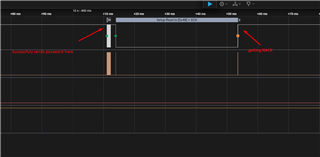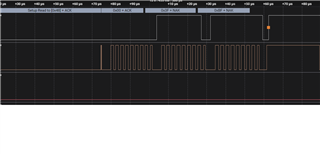Other Parts Discussed in Thread: MSP-FET
Tool/software:
Hello,
I want to test if my device is entering BSL mode correctly and if the sequence I use is correct in general.
I have added this piece of code in my application:
sc_stop(); Turns off ADC
__disable_interrupt(); // disable interrupts
((void (*)())0x1000)(); // jump to BSLThen I want to use MSF_FET in I2C mode and try to access BSL with following script:
LOG MODE FRxx I2C 100000 COM10 DELAY 2000 //gives wrong password to do mass erase RX_PASSWORD pass32_wrong.txt // //add delay after giving wrong password //because the device does not give //any response after wrong password applied // DELAY 2000 RX_PASSWORD pass32_default.txt
I connected MSP_FET's Backend UART pins to my Device's I2C. Also connected ground and VCC target.
I'm not getting ACK response on I2C line.
Is my sequence correct or am I doing something wrong ?



